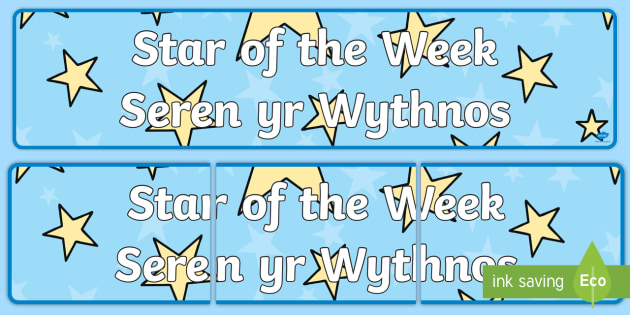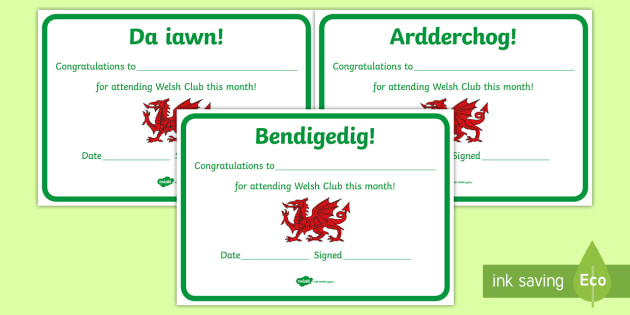The Welsh Government (2012) states
that after excluding Latin and Greek, the Welsh Language has the eldest
literature in Europe. In 1536, the Act of Union made Wales formally part of
England (Welsh Government, 2013). However, Williams (2008) suggests that this
affected traditional, unique aspects of the Welsh culture. Alternatively, Hodges
(2012) proclaims that parents and guardians in Wales have the opportunity to
enrol their children into a Welsh medium primary school. As a result, pupils
who attend these schools, embrace, experience and study the welsh culture as
well as advancing their fluency in the Welsh language (Hodges, 2012).

Correspondingly, Rhys and
Thomas (2013) reinforce their passion for Wales becoming a sincerely bilingual
nation, where individuals have the choice to live their lives through the
medium of Welsh or English. Therefore, the existence of both these languages,
is a noticeable element of pride to us all (Rhys and Thomas, 2013). However, it
is crucial that schools consistently implement the welsh language across all
aspects of teaching, as the Welsh Government (2012) believes the more the welsh
language is spoken, the more likely it will become an accessible everyday
language in Wales. Therefore, the Welsh Government (2013) proposes the
significance of policies and Welsh language strategies emphasising the value
and reputation of the language in Wales.
In addition, Estyn (2013) emphasises that throughout
the foundation phase children should, be advised and supported to, learn to apply
and communicate in Welsh to the greatest of their ability. However, in order
for children to progress their development of the Welsh language, Wallace and
Rogers (2001) advise that primary schools must provide learning environments
where children can listen to Welsh being spoken and respond suitably in these
situations. Consequently, Williams (2002) identifies that practitioners have a
duty of encouraging children to collaborate their needs in Welsh, as they
should be progressively exposed to the language. For instance, applying
captivating, visual displays in classroom’s including basic Welsh vocabulary and
labels in the setting, for children to use (Williams, 2002). As a result, Martin
(1995) acknowledges that pupils are likely to develop skills through
communicating in gratifying, hands-on activities, that enhance children’s current
knowledge and experiences in inspiring learning environments.

Likewise, Donaldson (2015) has redesigned the
curriculum in Wales, with an area of learning and experience devoted to ‘languages,
literacy and communication.’ Donaldson’s (2015) aim is to extend the emphasis
on the Welsh language, so children appreciate it as a contemporary style of
communicating, oppose to just studying a subject. In association, with the
Education Reform Act 1988, primary schools value the Welsh language as it is made
compulsory for all pupils to study, which recognises the Welsh Government (2013)
displaying their commitment to developing Wales as a bilingual nation.
Nonetheless, Donaldson (2015) highlights this encountering a core aim of the
curriculum, for pupils to become ‘ambitious, capable learners,’ who construct knowledge
and devise skills to apply Welsh in real-life contexts. Although the Welsh
Government (2013) suggest that learning the welsh language can be seen as an
incredibly monotonous experience for pupils. Hence, the Welsh Government (2013)
declares that most pupils do not respect or identify the subjects value, neither
do they believe in the present delivery for learning Welsh, as it does not help
them develop confidence to apply Welsh outside of lessons, or even school.
So, how can primary schools
make Welsh lessons more engaging?
In Cardiff Metropolitan University I
participated in an engaging session, learning welsh with my peers. This
included a game of bingo, songs, drama (role play) and using the interactive
whiteboard. I found these activities engaging, and Satchwell and Silva (1995)
state that activities like these, provide effective practice amongst supportive
and fun atmospheres, where children do not feel pressurised or afraid to persevere
when making mistakes. Therefore, these activities can be held at an appropriate
pace for children to keep up with, whilst conveying opportunities for
repetition and practice, in diverse approaches (Satchwell and Silva, 1995).
However, Satchwell (1997) insinuates that teachers must demonstrate energy, enthusiasm and a
passion for the language, to accomplish effective teaching and avoid children
feeling disengaged. Also, schools should select interesting use of audio and
visual stimuli, together with interesting topics, books and videos to engage
with as a whole class, in groups and individually (Williams, 2008).
Regardless, Baker (1996) upholds children’s capability of incidentally learning a language, through authentic contexts and play. Correspondingly, Baker (1996) and Hodges (2012) advocate that learning Welsh incidentally, helps the language become a natural part of class activity, which carries intrinsic value and communicative purpose to learning Welsh, in primary school environments.
Regardless, Baker (1996) upholds children’s capability of incidentally learning a language, through authentic contexts and play. Correspondingly, Baker (1996) and Hodges (2012) advocate that learning Welsh incidentally, helps the language become a natural part of class activity, which carries intrinsic value and communicative purpose to learning Welsh, in primary school environments.
In conclusion, the Welsh language is valued in most
primary schools across Wales and Donaldson (2015) has adapted the curriculum to
include ‘language, literacy and communication’ as an area of learning and
experience. The Welsh Government (2013) suggests this allows children to build
on the knowledge and understanding they already have and progress their
development in Welsh, through real-life contexts. However, the Welsh Government
(2012) identifies a substantial shortage of employed individuals who are able
to work effectively in both English and Welsh, particularly in tourism, health
and social care. Similarly, Hodges (2012) reinforces the value of people who
can maintain everyday conversations in Welsh when communicating with customers.
Therefore, Satchwell (1997) states that practitioners do not have to be language
specialists, to teach children effectively. Although, teachers must consistently
display a passion and confidence in themselves, to create a positive ethos for teaching
and learning the Welsh language (Williams, 2008). Martin (1995) identifies a
simple way for this to occur, is offering regular praise and encouragement
towards children’s progression e.g. handing out certificates and rewards.


Reference List
Baker, C. (1996) 2nd
Edition Foundations of Bilingual Education and Bilingualism: London; Multilingual Matters
Donaldson, G. (2015). Successful futures: Independent review of curriculum and assessment arrangements in Wales
Estyn (2013) Welsh language development in the Foundation
Phase. Estyn.
Hodges,
R. (2012). Welsh-Medium Education and Parental Incentives--The Case of the
Rhymni Valley, Caerffili. International
Journal of Bilingual Education and Bilingualism, 15(3),
355-373.
Martin, C. (1995) Games
& fun activities, Young Pathfinder,
CILT
Rhys,
M. & Thomas, E. (2013). Bilingual Welsh-English Children's Acquisition of
Vocabulary and Reading: Implications for Bilingual Education. International Journal of Bilingual Education and
Bilingualism, 16(6),
633-656.
Satchwell, P. (1997) Keep
Talking, Young Pathfinder, CILT
Satchwell, P. & de
Silva. (1995) Catching them young, Young
Pathfinder, CILT
Wallace,
M & Rogers, G. (2001). Potentially Aspiring Headteachers in Small Welsh
Primary Schools: Education Professional that Policy Makers Forgot? School Leadership & Management, 21(4),
441-61.
Welsh Government. (2012) A
living language: a language for living – Welsh
Language Strategy 2012–17 Welsh Government.
Welsh Government. (2013) One language for all: Review of Welsh second
language at Key Stages 3 and 4 – Report and recommendations Welsh Government.
Williams, C. (2002) Using Language Games to Develop Oracy, CBAC/WJEC
Williams,
R. (2008). Welsh for All:
Experiments in Bilingual Teaching in the Interwar Years.




No comments:
Post a Comment